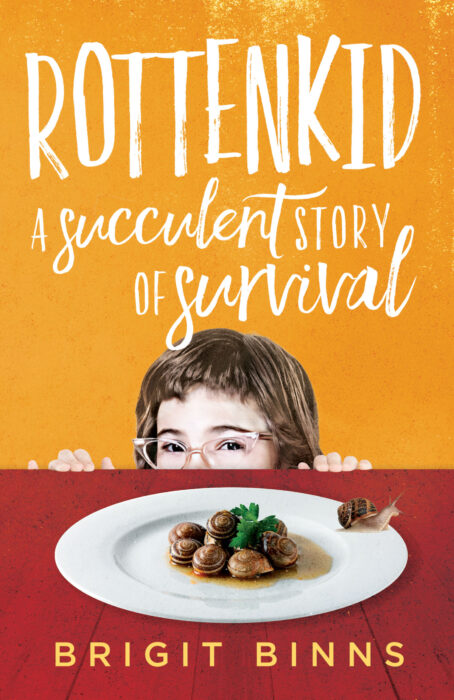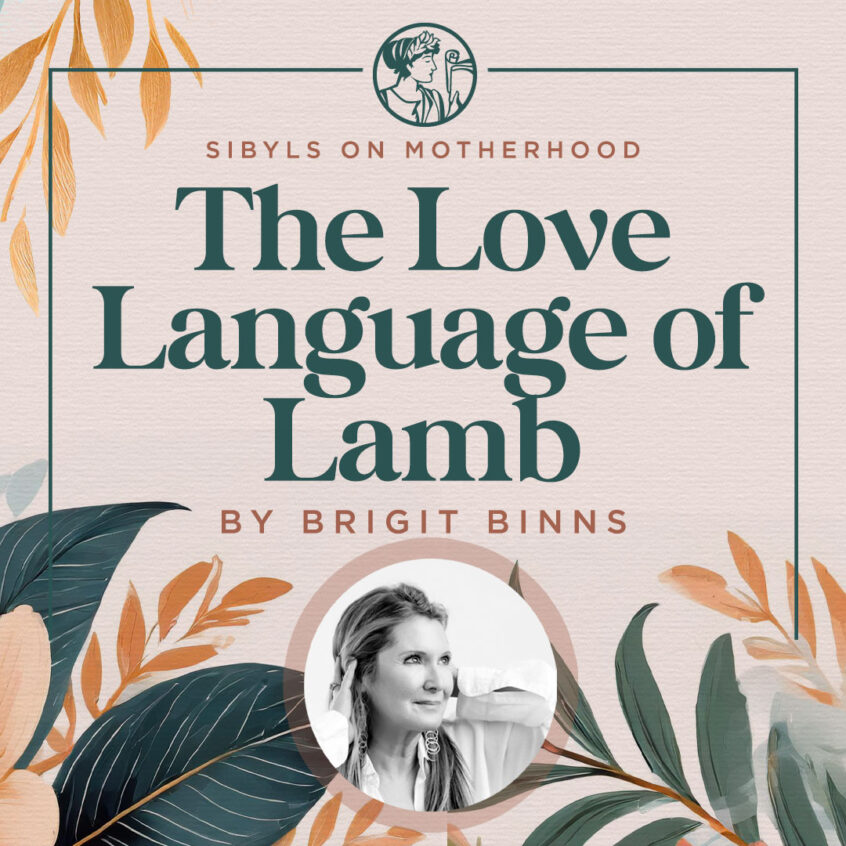from the Sibylline Press Series: Sibyls on Motherhood
The Love Language of Lamb
by Brigit Binns
There was no love lost between my mother and me, but the one thing that we did agree on was the importance of good food, lovingly prepared. There were times, in the tempests of adolescence and beyond, that I forgot this connection. And yet, when I was in the Grand Canyon, many miles from phone, road, or snail-mailbox, and alone for three days with a tarp, a journal, and a large bag of trail mix, I remembered.
I remembered her lamb stew.
This recipe is not hers. Why? Because after writing almost 30 cookbooks and many hundreds of recipes, mine is better. But, perhaps arguably, she showed me the way.
Seven-Hour Leg of Lamb, Basted with Tears
Serves 6 to 7; up to 14 as a topping for pasta
Slightly adapted from The Relaxed Kitchen: How to Entertain with Casual Elegance and Never Lose Your Mind, Incinerate the Souffle, or Murder the Guests, by Brigit Binns.
St. Martin’s Press, 2007
5 ½ to 7 pound boneless or bone-in leg of lamb
Cloves from 2 heads garlic, 4 slivered, the rest just peeled
Olive oil
Coarse sea salt and freshly ground black pepper
2 teaspoons dried thyme
1 large yellow or white onion, roughly chopped
3 carrots, scrubbed and roughly chopped
3 ribs celery, roughly chopped
2 tablespoons tomato paste
1 cup semi-sweet white wine, such as Riesling, Gewürztraminer, or even a Muscat
1 cup chicken broth or homemade poultry stock
1/3 cup aged red wine vinegar
3 bay leaves
Ideally, several hours before you will begin cooking the lamb or, worst case, right before: Make slits all over the lamb and poke a sliver of garlic inside each. Let the lamb stand, loosely covered, at room temperature for 1 hour.
Preheat the oven to 450°F. Rub the lamb all over with olive oil and season quite generously with salt, pepper, and the thyme.
Place the leg fat side down in your largest lidded pot or casserole and roast uncovered for 15 minutes. Add the whole garlic cloves and vegetables and turn the lamb over, getting some of the veggies underneath; roast for 15 minutes more.
Reduce the oven temperature to 300°F and cover the roasting pan tightly (see above). Slow roast, undisturbed, for 3 hours.
Make a basting mixture by stirring together the tomato paste, wine, broth, and vinegar. Remove the lid, turn the lamb over, toss the bay leaves over the vegetables, and spoon a good ½ cup of the wine mixture over the lamb. Continue cooking uncovered for an additional 2 hours, drizzling with another ½ cup of basting juice every 20 to 30 minutes, until the basting mixture is gone. Turn again after 1 hour.
The lamb is ready when it is falling apart, or at any point soon thereafter. According to the French, you should be able to eat it with a spoon.
Gently transfer the lamb to a warm serving platter, leaving the bone, if any, behind. Cover with foil while you strain the juices: place a large sieve over a large measuring cup; scoop in all the vegetable mixture from the roasting pan and press down hard to extract all the delicious juices. Let stand for a minute, then spoon off the fat (or remove the de-fatted juices from underneath the fat with a bulb baster, transferring them to a small saucepan). Warm through, if necessary.
Serve the meat (slice would be the wrong word to use here; in fact, spoon is more accurate), drizzling generously with the pan juices.
Lagniappe:
Although this lamb is as tasty and consoling as you can get, it will not be winning any beauty contests. For beautiful color and kick: Make an orange gremolata by combining 4 tablespoons grated orange zest (use a microplane grater for the most ethereal result), with 3 tablespoons each of very finely chopped garlic and finely chopped flat-leaf parsley. Scatter some over the lamb and pass the remaining gremolata. This is not a traditional French garnish for lamb, but who cares? The lamb is so tender it’s almost a ragout, and you could easily serve a real crowd by shredding the meat and serving it—perhaps with the addition of some diced tomatoes—scattered over a pound or two of imported, cooked and lightly buttered fettucine.
The Small Print:
If you don’t have a large, lidded pot or casserole large enough to hold the lamb, use copious amounts of heavy-duty foil, crimping it really, really thoroughly around all the edges, and especially around the handles. This lamb is very forgiving: Serve straight from the oven or let stand for up to 1 hour, then rewarm in a low oven.
Mise en Place:
Sliver 4 cloves of the garlic and poke the lamb with it as soon as you wake up in the morning. Refrigerate until 1 hour before you begin cooking, then let stand at room temperature (this should be seven hours before serving time). Slice and roughly chop the onions, carrots, and celery all together with one big knife.
 About Brigit Binns
About Brigit Binns
Brigit’s cookbook Eating up the West Coast was her 29th. A prolific cookbook author, her titles have sold over 100,000 copies. In addition, she’s helped some of the U.S.A.’s most respected chefs, like New York’s Michael Psilakis and Los Angeles’ Joachim Splichal, turn their cookbook dreams into reality. During the 10 years she lived in Europe, Brigit graduated from England’s Tante Marie cooking school, lived and catered in Spain, and edited the Costa del Sol’s English-language magazine. Brigit and her dishes have been featured on The Today Show multiple times. She now lives full-time in California’s Central Coast wine country with her dog and fabulous husband, Casey, (aka the Wine Spectator-award-winning Paso Wine Man).
 Brigit Binn’s memoir Rottenkid: A Succulent Story of Survial was published by Sibylline Press in April 2024. Click here to purchase her book.
Brigit Binn’s memoir Rottenkid: A Succulent Story of Survial was published by Sibylline Press in April 2024. Click here to purchase her book.


